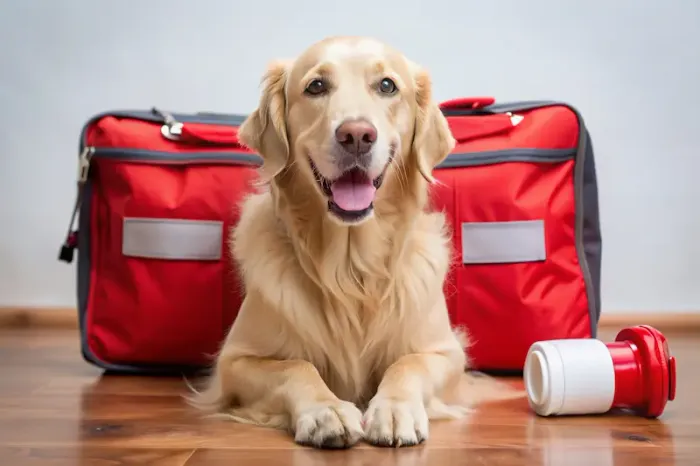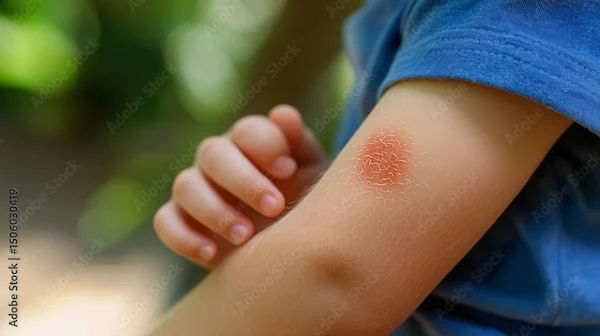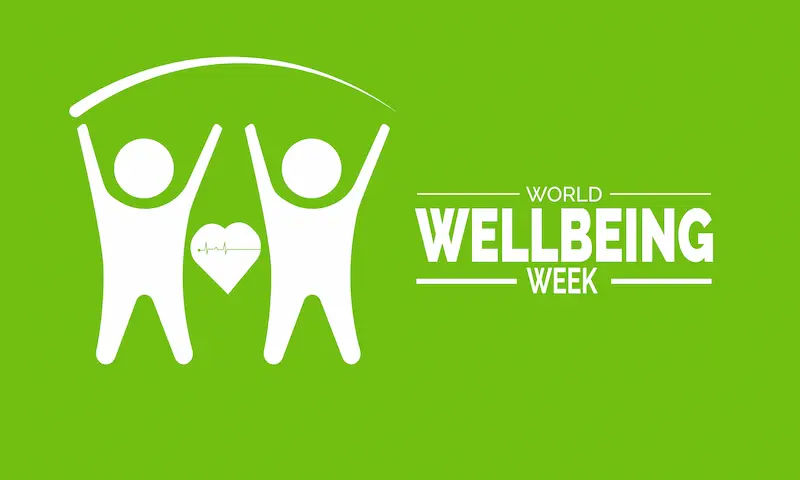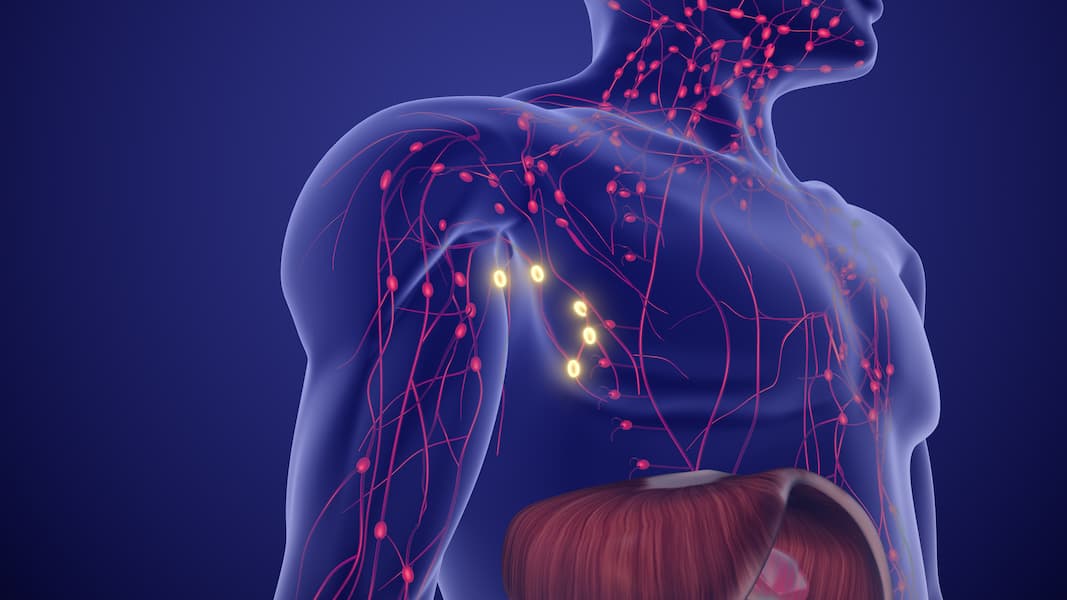Guide to Dog Bite First Aid Kit Home Care What To Expect
Learn essential dog bite first aid. Discover what to include in a home care kit, step-by-step treatment for minor bites, and when to seek medical help.

Written by Dr. Siri Nallapu
Reviewed by Dr. Rohinipriyanka Pondugula MBBS
Last updated on 24th Oct, 2025

Introduction
A dog bite can happen in a split second—at home, in the park, or on a walk—and it’s normal to feel alarmed. The right first steps make a big difference. This guide gives you clear, practical dog bite first aid you can start at home, plus what to expect next. You’ll learn exactly how to stop bleeding, wash and dress the wound, and when it’s essential to see a clinician. We’ll explain rabies and tetanus, which bites are more likely to get infected, and how antibiotics are chosen. You’ll also get a checklist for a dog bite first aid kit, tips for caring for different types of wounds (like punctures or hand bites), signs of infection, and a sensible healing timeline. Finally, we’ll cover documentation, reporting, and how to prevent future bites—especially around children. Whether you’re a pet owner or a passerby, use this as your step-by-step plan for dog bite first aid and smart home care, with links to trusted sources. If symptoms worsen or you’re unsure about rabies or tetanus risk, seek medical advice promptly.
Why Quick First Aid Matters After a Dog Bite
Dog bites are more common than many realize. In the United States alone, an estimated 4.5 million people are bitten by dogs each year, and hundreds of thousands seek medical attention . The main risks are bleeding, infection, tissue damage, and, rarely, rabies. Early dog bite first aid—especially copious wound washing—reduces bacterial load and lowers the chance of infection.
Infection risk varies by bite location and depth. Dog mouths harbor bacteria such as Pasteurella, Staphylococcus, Streptococcus, Capnocytophaga, and anaerobes [2][3]. While cat bites are more infection-prone, dog bites still lead to infection in a meaningful minority of cases—especially on the hands, face, or over joints, or when there’s deeper tissue damage. People with diabetes, vascular disease, or weakened immune systems are more susceptible and may need antibiotics and closer follow-up from the outset [2][4].
Unique insight: Time-to-clean counts more than most people think. Washing the wound thoroughly within minutes can reduce contamination before bacteria embed in tissues. If you can only do one thing while arranging care, irrigate the wound under running water for several minutes. It’s one of the most impactful, low-tech steps available.Consult a Top General Physician
Immediate First Aid: A Step-by-Step Guide (First 10–15 Minutes)
1) Ensure safety. Move away from the dog to prevent repeated biting. If the dog is yours, confine it. If it’s unknown, avoid pursuit.
2) Hand hygiene. If possible, wash or sanitize your hands before touching the wound.
3) Stop the bleeding.
• Apply firm, direct pressure with clean gauze, a cloth, or a folded bandage. Maintain pressure for 10–15 minutes without peeking. If blood soaks through, add more layers; don’t remove the first layer.
• For severe, spurting bleeding or if the person is faint or pale, call emergency services.
4) Copious washing and irrigation.
• Rinse under running tap water or normal saline for at least 5 minutes; 10 minutes is better for visibly contaminated wounds. Use a clean squeeze bottle or an irrigation syringe if available to generate gentle pressure and flush out debris.
• Use mild soap around (not deep inside) the wound. Avoid harsh chemicals like hydrogen peroxide inside the wound; they can damage healthy tissue.
5) Gentle debridement.
• If dirt or debris is visible on the surface, gently remove it with clean tweezers washed with soap and water or alcohol.
• Do not probe deep punctures.
6) Apply a dressing.
• Pat surrounding skin dry. Apply a thin layer of petroleum jelly or antibiotic ointment if advised locally, then cover with a sterile nonstick pad and wrap lightly with gauze or a bandage.
• Elevate the limb if possible to reduce swelling.
7) Pain control.
Over-the-counter pain relievers like acetaminophen or ibuprofen can help, unless contraindicated.
Long-tail keywords used: how to clean a dog bite wound; dog bite first aid at home.
Build a Dog Bite First Aid Kit at Home
Essential items specific to dog bite care:
• 500–1000 mL bottle of sterile saline or a clean squeeze bottle for tap water irrigation.
• 10–20 mL irrigation syringe with a splash shield (or use a clean sports bottle to create pressure).
• Sterile nonstick pads (various sizes), sterile gauze rolls, and adhesive bandages.
• Medical tape and elastic wrap.
• Nitrile gloves and alcohol-based hand sanitizer.
• Tweezers and small scissors.
• Petroleum jelly or antibiotic ointment (per local guidance).
• Instant cold pack for swelling.
• Waterproof wound labels or a small notebook to document time/date and steps taken.
Optional items that make care easier:
• Headlamp or small flashlight.
• Clean squeeze bottle dedicated to wound irrigation.
• Waterproof phone pouch for taking photos without contaminating your device.
• Color-coded “action card” listing quick steps for dog bite first aid.
Unique insight: Pack a one-page, color-coded action card with the key steps: Stop bleeding → Wash for 5–10 minutes → Cover → Assess rabies/tetanus risk → Decide on care (urgent vs routine). Under stress, this simple cue helps you follow best practices.
Long-tail keywords used: best first aid kit for dog bites.
When to Seek Medical Care vs. Home Care
Seek urgent care or emergency evaluation if:
• Heavy or uncontrolled bleeding, spurting blood, or deep wounds exposing fat/muscle.
• Bites to the face, hand, fingers, genitals, or near a joint.
• Deep puncture wounds, crush injuries, or significant tissue damage.
• Signs of nerve or tendon injury: numbness, weakness, inability to move a finger or joint.
• You are immunocompromised, have diabetes, or significant vascular disease.
• The dog is unknown, non-vaccinated, or cannot be observed; rabies risk is unclear.
• The victim is a child with any significant bite, especially on the face [1][2][4].
Home care may be reasonable for very superficial abrasions with minimal bleeding in healthy adults, after thorough washing and proper dressing, and with close observation. However, if there is any doubt, it’s safer to seek medical advice. If symptoms persist beyond two days, or if redness, swelling, pain, or drainage worsen, consult a doctor online with Apollo24|7 for further evaluation or to arrange in-person care.
Stitches or no stitches?
Many dog bite wounds are not closed immediately (especially punctures or hand wounds) to reduce infection risk. Facial wounds may be closed promptly for cosmetic reasons after proper cleaning. This decision is best made by a clinician.
Long-tail keywords used: when to see a doctor for a dog bite; dog bite on hand home care.
H2: Rabies and Tetanus: What to Know and Do
Rabies risk assessment:
• In many regions, domestic dog rabies is rare; in others, it remains a serious risk. If bitten by a dog of unknown vaccination status, local guidelines may recommend observing the dog for 10 days when possible; a healthy dog that remains well for 10 days after the bite is unlikely to have been shedding rabies virus at the time.
• If the dog cannot be found or observed, or if rabies is prevalent in your area, post-exposure prophylaxis (PEP) may be advised. PEP typically includes immediate wound cleaning, a series of rabies vaccinations on days 0, 3, 7, and 14, and—if the exposure is higher risk—rabies immunoglobulin infiltrates around the wound on day 0.
• Your local health department or clinician will guide you based on local epidemiology.
Tetanus:
• Dog bites are considered “dirty” wounds. If your tetanus vaccine is not up to date, you may need a booster (often if more than 5 years have passed for dirty wounds).
• Keep your vaccination record handy. If in doubt, ask a clinician.
If you’re uncertain about rabies or tetanus needs, consult a doctor online with Apollo24|7 promptly, and follow advice for any required vaccinations.
Long-tail keywords used: rabies post-exposure prophylaxis steps; tetanus shot after animal bite.
Antibiotics and Pain Control: What to Expect
Antibiotics:
• Not every dog bite requires antibiotics, but they are often recommended for high-risk wounds: hand bites, deep punctures, crush injuries, bites near joints, facial bites that will be sutured, and patients who are immunocompromised or have diabetes.
• A common first-line antibiotic is amoxicillin–clavulanate; for penicillin allergy, alternatives may include doxycycline plus metronidazole, or a fluoroquinolone plus metronidazole, depending on local guidance and patient factors. Prophylaxis is often prescribed for 3–5 days for high-risk wounds, and longer if there are signs of established infection.
Pain control and supportive care:
• Over-the-counter analgesics (e.g., acetaminophen or ibuprofen) can reduce pain and inflammation; avoid NSAIDs if contraindicated.
• Elevate the limb to reduce swelling for 24–48 hours.
• Replace dressings daily or when wet/soiled. Keep the wound clean and dry. Showering is usually safer than soaking.
Unique insight: Ask your clinician about “delayed primary closure” if a cosmetically sensitive area (like the face) is involved—sometimes the wound is cleaned and observed for 48–72 hours, then closed if no infection signs emerge.
If your condition does not improve after starting antibiotics or pain control, book a physical visit to a doctor with Apollo24|7.
Long-tail keywords used: antibiotics for dog bite wounds.
Caring for Different Wound Types at Home
Puncture wounds:
• Common with dog bites from canines. Harder to clean deeply, thus higher infection risk. Avoid closing punctures; keep them clean, covered, and monitored closely.
Lacerations:
• Can be jagged; may require trimming and, in some cases, stitches (especially on the face). After medical care, follow instructions for dressing changes and cleaning.
Crush injuries:
• Strong jaws can cause deep tissue damage and bruising even if the skin looks intact. Watch for swelling, increasing pain, or limited movement; imaging may be needed.
Hand, face, and joint-adjacent bites:
• Hands: high infection risk and complex structures—tendons, joints, nerves. Get evaluated even for small punctures.
• Face: consider urgent care for cleaning and potential closure to minimize scarring.
• Over joints: infection can spread into joint spaces; seek medical care.
People with diabetes or vascular disease:
• Lower blood flow delays healing and raises infection risk. Early evaluation is advised. If you have diabetes and poor glucose control, improved control helps healing. If recommended, Apollo24|7 offers a convenient home collection for tests like HbA1c.
Long-tail keywords used: puncture wound from dog bite; dog bite treatment for children.
Signs of Infection and Healing Timeline
Normal healing:
• First 24–48 hours: mild redness at the edge, tenderness, slight swelling, clear or slightly bloody drainage is possible.
• Days 3–7: pain and swelling should gradually improve; the wound begins to close. Itching is common as skin heals.
Warning signs of infection:
• Increasing redness that spreads, warmth, worsening pain, swelling, pus-like drainage, foul odor, fevers or chills, red streaks, or swollen lymph nodes.
• Pain with finger movement, numbness, or limited motion may indicate deeper involvement (e.g., tendon sheath, joint).
• If you notice these signs, consult a doctor online with Apollo24|7 for advice on antibiotics, possible wound culture, or in-person assessment.
Scar care:
• After the wound closes, protect from sun with SPF 30+ for at least 6 months; gentle massage with a plain moisturizer may help scar pliability.
Silicone gel/sheets can be considered once skin is intact.
Long-tail keywords used: signs of infection after dog bite; how long does a dog bite take to heal.
Documentation, Reporting, and Insurance
Information to collect:
• Dog owner’s name, contact details, and proof of rabies vaccination if available.
• Dog’s description, behavior at the time, and whether this has happened before.
• Location, date, and time of the incident. Take clear photos of the wound before and after cleaning (if safe to do so).
Reporting:
• Depending on local regulations, report the bite to animal control or public health authorities, especially if the dog is unknown, vaccination status is unclear, or the bite is significant.
• Reporting helps coordinate rabies observation and protect others.
Insurance and records:
• Keep records of medical visits, receipts, and photographs. These may be important for health insurance or liability claims.
Unique insight: Use your phone’s “scan” feature to store vaccination proof and contact information from the dog’s owner right away—small details are easier to capture while fresh.
Long-tail keywords used: dog bite legal reporting.
Emotional Aftercare and Preventing Future Bites
It’s normal to feel shaken after a bite, and children can be especially anxious. Offer reassurance, explain what happened in age-appropriate terms, and consider brief support from a counselor if fear persists.
Prevention strategies:
• Supervise children around dogs; teach them to avoid hugging, climbing on, or disturbing dogs while eating or sleeping.
• Ask owners before approaching a dog; let the dog sniff your closed hand first.
• Learn early stress signals in dogs (lip licking, yawning, stiff body, whale eye). If your own dog bit someone, consult your veterinarian and a qualified trainer or behaviorist to address triggers and reduce future risk.
Unique insight: Practice a “pause and ask” routine with kids—stop three feet from any dog, ask the owner for permission, and let the dog choose to approach. This simple ritual reduces impulsive contact and potential bites.
Long-tail keywords used: preventing dog bites around children.
Conclusion
Dog bite first aid starts with simple but powerful steps: stop the bleeding, wash thoroughly, and dress the wound. From there, the right choices—deciding when to seek medical care, assessing rabies and tetanus risk, and using antibiotics for higher-risk wounds—help prevent complications and speed recovery. Hand and facial bites, deep punctures, and bites in people with diabetes or weakened immunity deserve particularly prompt evaluation. Most wounds, with good early care, heal uneventfully in days to weeks; keep an eye out for signs of infection like spreading redness, warmth, and pus. Document the incident, including the dog’s vaccination status and contact details; reporting can be important for public health and prevention. Finally, invest in prevention: supervise children around dogs, learn canine body language, and consider professional help if your own dog bit someone. If symptoms persist beyond two days or you’re worried about infection, consult a doctor online with Apollo24|7 for timely guidance; and if you need in-person evaluation or vaccines, arrange a visit promptly. For those managing diabetes, better glucose control supports healing—Apollo24|7 offers a convenient home collection for tests like HbA1c if needed. With a prepared first aid kit and a clear plan, you can handle dog bite first aid confidently at home and know exactly what to expect next.Consult a Top General Physician
Consult a Top General Physician

Dr. Ashita Kuruvilla
General Physician/ Internal Medicine Specialist
7 Years • MBBS
Kolkata
KVC CLINIC, Kolkata

Dr. Anand Ravi
General Physician
2 Years • MBBS
Bengaluru
PRESTIGE SHANTHINIKETAN - SOCIETY CLINIC, Bengaluru

Dr Aakash Andgi
General Physician/ Internal Medicine Specialist
9 Years • MBBS MD
Bengaluru
Apollo Clinic, JP nagar, Bengaluru

Dr Syed Mateen Pasha
General Physician
2 Years • MBBS
Bengaluru
PRESTIGE SHANTHINIKETAN - SOCIETY CLINIC, Bengaluru

Dr. Harshendra Jaiswal
General Physician/ Internal Medicine Specialist
12 Years • MBBS , MD (General medicine)
Kolkata
108 DHANA DHANVANTARI Clinic, Kolkata
(25+ Patients)
Consult a Top General Physician

Dr. Ashita Kuruvilla
General Physician/ Internal Medicine Specialist
7 Years • MBBS
Kolkata
KVC CLINIC, Kolkata

Dr. Anand Ravi
General Physician
2 Years • MBBS
Bengaluru
PRESTIGE SHANTHINIKETAN - SOCIETY CLINIC, Bengaluru

Dr Aakash Andgi
General Physician/ Internal Medicine Specialist
9 Years • MBBS MD
Bengaluru
Apollo Clinic, JP nagar, Bengaluru

Dr Syed Mateen Pasha
General Physician
2 Years • MBBS
Bengaluru
PRESTIGE SHANTHINIKETAN - SOCIETY CLINIC, Bengaluru

Dr. Harshendra Jaiswal
General Physician/ Internal Medicine Specialist
12 Years • MBBS , MD (General medicine)
Kolkata
108 DHANA DHANVANTARI Clinic, Kolkata
(25+ Patients)
More articles from General Medical Consultation
Frequently Asked Questions
1) How long should I wash a dog bite wound?
Rinse under running water or saline for at least 5 minutes; 10 minutes is better if the wound is dirty. This is key to effective dog bite first aid at home.
2) Do I need antibiotics for a dog bite?
Not always. They’re commonly prescribed for high-risk wounds (hands, deep punctures, facial bites to be sutured, or if you’re immunocompromised). A clinician will advise the best antibiotic for dog bite wounds.
3) When should I worry about infection after a dog bite?
Increasing redness/warmth, worsening pain, swelling, pus, fever, or red streaks are warning signs of infection after dog bite. Seek medical care if these develop.
4) Do I need a tetanus shot after an animal bite?
Possibly. Dog bites are considered dirty wounds. If it’s been more than 5 years since your last tetanus booster (or you’re unsure), you may need one. Ask a clinician.
5) How long does a dog bite take to heal?
Minor wounds improve within a few days and typically heal in 1–3 weeks. Deeper wounds take longer. Protect healing skin from sun and follow scar care tips.




